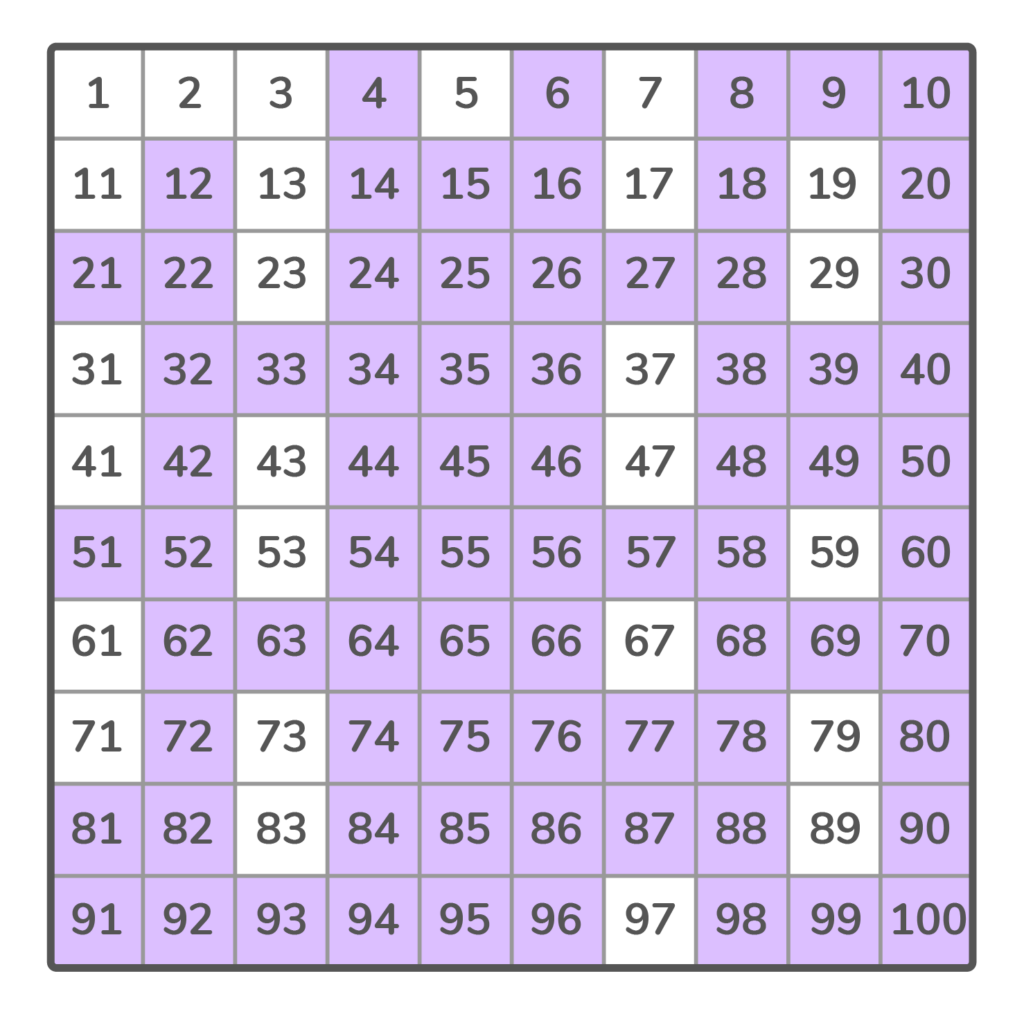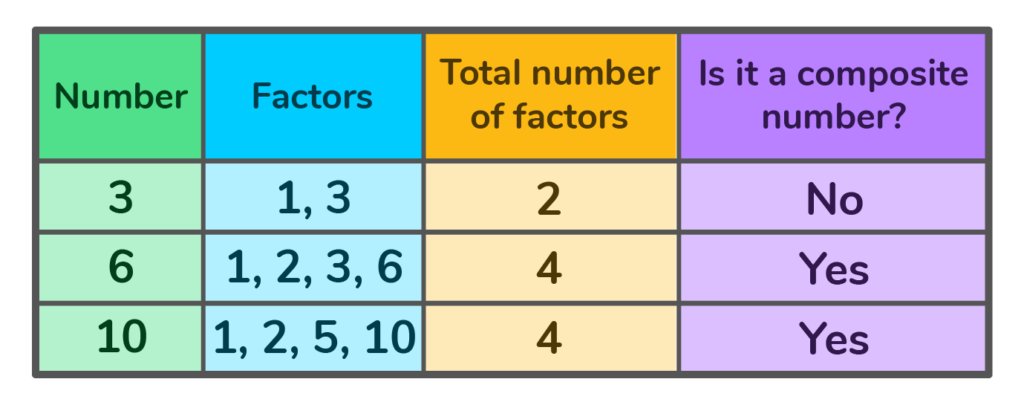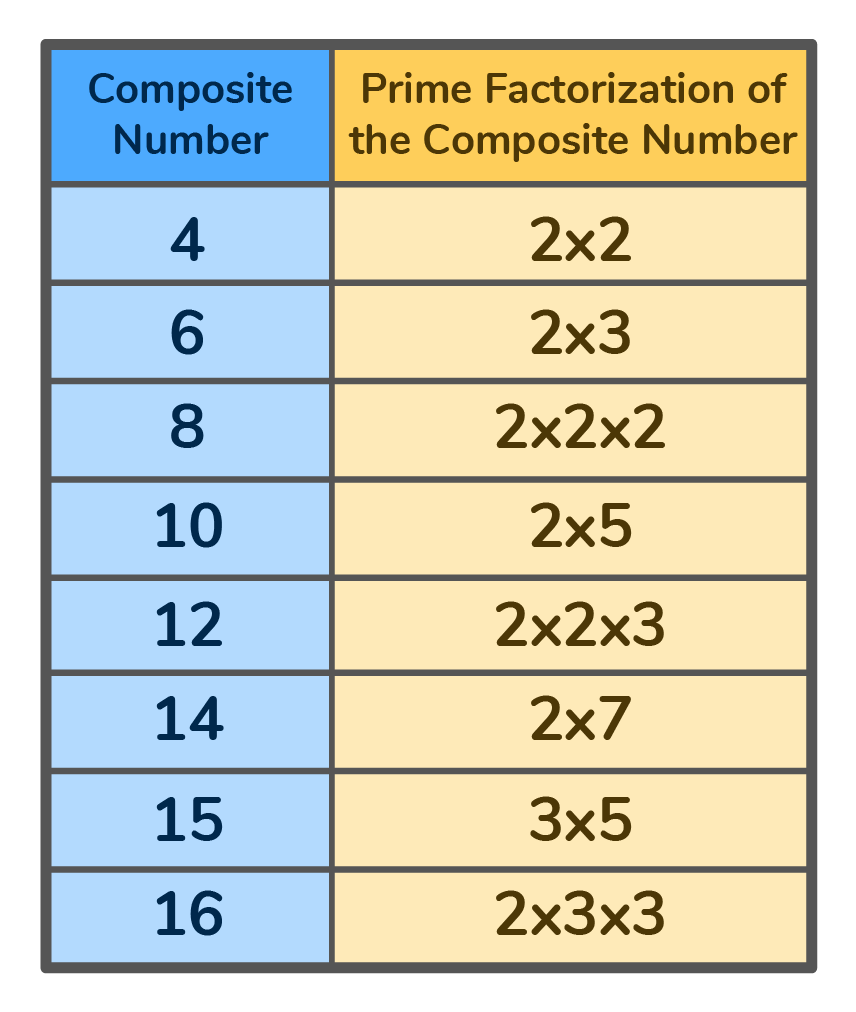

Learn the definition of composite numbers, discover how we use them in maths and check out a list of composite numbers from 1 to 100!

Author
Amber Watkins
Published
November 14, 2023


Learn the definition of composite numbers, discover how we use them in maths and check out a list of composite numbers from 1 to 100!

Author
Amber Watkins
Published
Nov 14, 2023


Learn the definition of composite numbers, discover how we use them in maths and check out a list of composite numbers from 1 to 100!

Author
Amber Watkins
Published
Nov 14, 2023


Key takeaways
Table of contents
In maths, composite numbers make up a large part of the natural numbers that we know and use. But what exactly are composite numbers?
Composite numbers include all natural numbers that have more than two factors.

Let’s learn more about composite numbers and how we can find them!
Unlock unlimited maths questions
Put your skills to the test with fun exercises + maths games that are proven to boost ability!
Composite numbers can be defined as any positive integers or natural numbers that have more than two factors.
These factors usually include 1 and itself, along with at least one other value. In other words, composite numbers are the opposite of prime numbers, numbers that only have two factors.
The list of composite numbers begins with the natural number 4.
The first 10 composite numbers are 4, 6, 8, 9, 10, 12, 14, 15, 16, 18. What makes these numbers composite?
They all have more than two factors! Factors are two numbers you multiply to get an answer.
For example: What are the factors of 6?
1 x 6 = 6
2 x 3 = 6
So 1, 2, 3 and 6 are all factors of 6.
Here are all the composite numbers from 1 to 100.

Meet DoodleMaths, the award-wining maths app that’s proven to boost a child’s rate of progression in as little as six weeks!*
Filled with fun, interactive questions covering the primary curriculum, it creates each child a unique work programme tailored to their needs, building the confidence and skills in maths. Try it for free today!

*Based on earning 24 stars a day in DoodleMaths. Read full study

There are two types of composite numbers that you’ll see on a number line:
1. Odd composite numbers
2. Even composite numbers
Odd composite numbers are any odd number that has more than two factors. This includes all positive odd numbers that are not prime numbers.
The list of odd composite numbers includes 9, 15, 21, 25, and 35.
Can you use the composite numbers list (from 1 to 100) to name the next three odd numbers in the above sequence?
Even composite numbers are any even numbers that have more than two factors. This includes all positive even numbers that are not prime numbers.
The list of even composite numbers includes 4, 6, 8, 10, and 12.
Can you use the composite numbers list (from 1 to 100) to name the next three numbers in the above sequence?

When we look at a number line, it’s made up of prime and composite numbers. How can we identify which numbers are composite numbers?
All composite numbers are divisible by prime numbers.
Prime factorisation is the process of finding all the prime numbers that can be multiplied to equal the composite number.
For example: the prime factorisation for the composite number 20 is 2 x 2 x 5.
The numbers 2 and 5 are both prime numbers, so we can use them to factor the number 20.
1. Choose a prime number to begin multiplying
2. Continue by choosing other prime numbers to multiply until the multiplied total equals the composite number you’re factoring

Click on the boxes below to see the answers!
Yes, 10 is a composite number because it has more than two factors! 1, 2, 5, and 10.
No, it’s not a composite number because it only has two factors (1 and 3). Since 3 only has two factors, it’s considered a prime number.
Share your answer with a friend to check! Did you get the same answer?
No, a number can not be both prime and composite. A prime number only has two factors.
According to the composite number definition, a composite number has more than two factors. The number of factors clearly identifies a number as either prime or composite, not both.
The first 10 composite numbers are 4, 6, 8, 9, 10, 12, 14, 15, 16, 18.
The smallest composite number is the natural number 4. The factors of 4 are 1, 2, and 4. It’s the first natural number that has more than two factors.
No, all even numbers are not composite. The number 2 is an even number. However, it only has two factors: 1 and 2.
Because the number 2 only has two factors it’s a prime number, not a composite number.
No, the number 7 is not a composite number. The number 7 only has two factors: 1 and itself. Because the number 7 only has two factors it’s a prime number, not a composite number.
No, zero is not a composite number. The number zero is neither prime nor composite.
Composite numbers are all natural numbers or positive integers that have more than two factors. A composite number can be odd or even, but never prime. To find a composite number, you must find all the factors to see if there are more than two.

Rational vs irrational numbers
Explore the differences between rational and irrational numbers
What is standard form?
Discover how standard form helps us represent numbers and equations clearly
Lesson credits

Amber Watkins
Amber is an education specialist with a degree in Early Childhood Education. She has over 12 years of experience teaching and tutoring elementary through college level math. "Knowing that my work in math education makes such an impact leaves me with an indescribable feeling of pride and joy!"

Amber Watkins
Amber is an education specialist with a degree in Early Childhood Education. She has over 12 years of experience teaching and tutoring elementary through college level math. "Knowing that my work in math education makes such an impact leaves me with an indescribable feeling of pride and joy!"
Book a chat with our team
If you’d like to use Doodle’s browser version, please visit this page on a desktop.
To log in to Doodle on this device, you can do so through our apps. You can find out how to download them here: